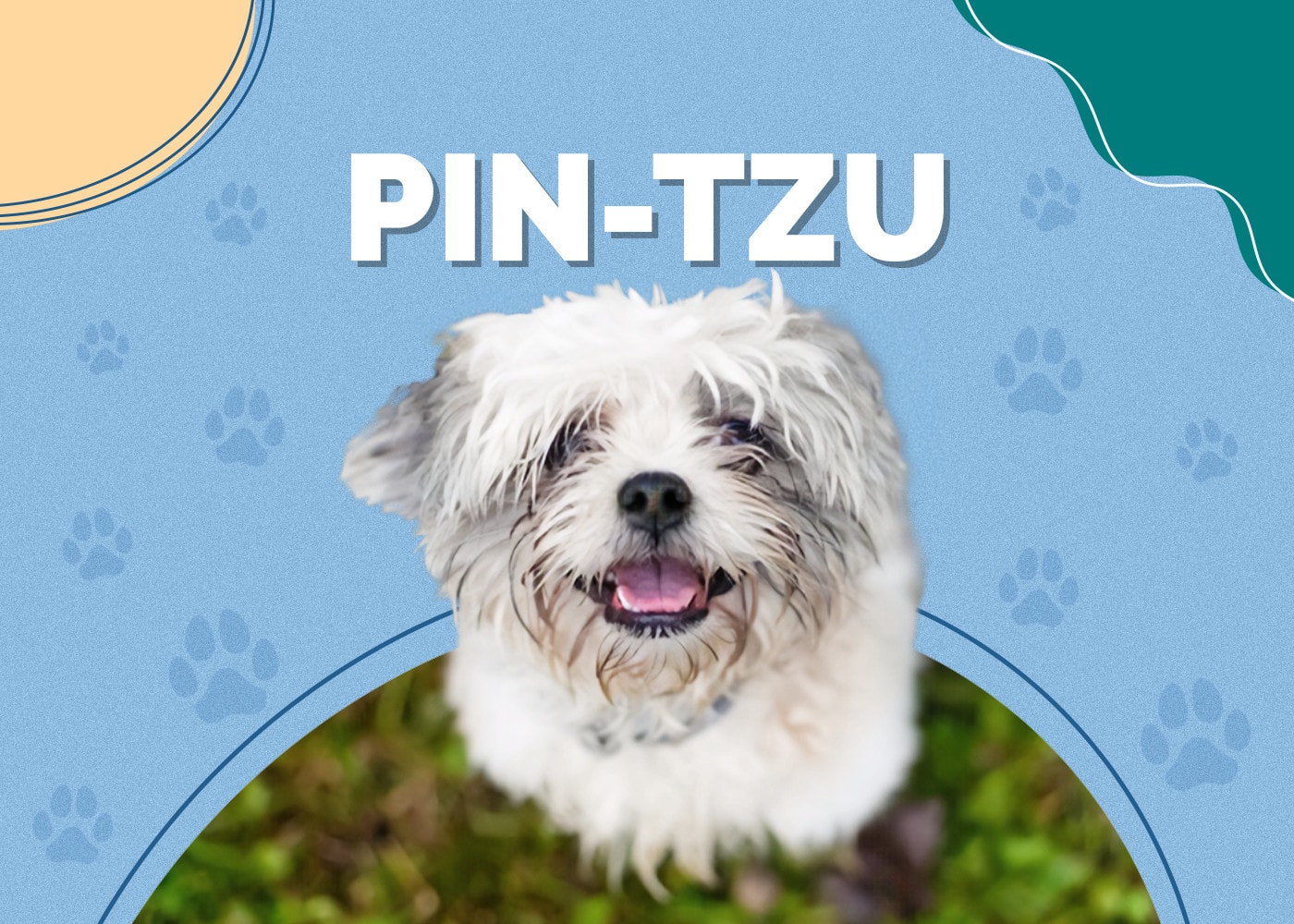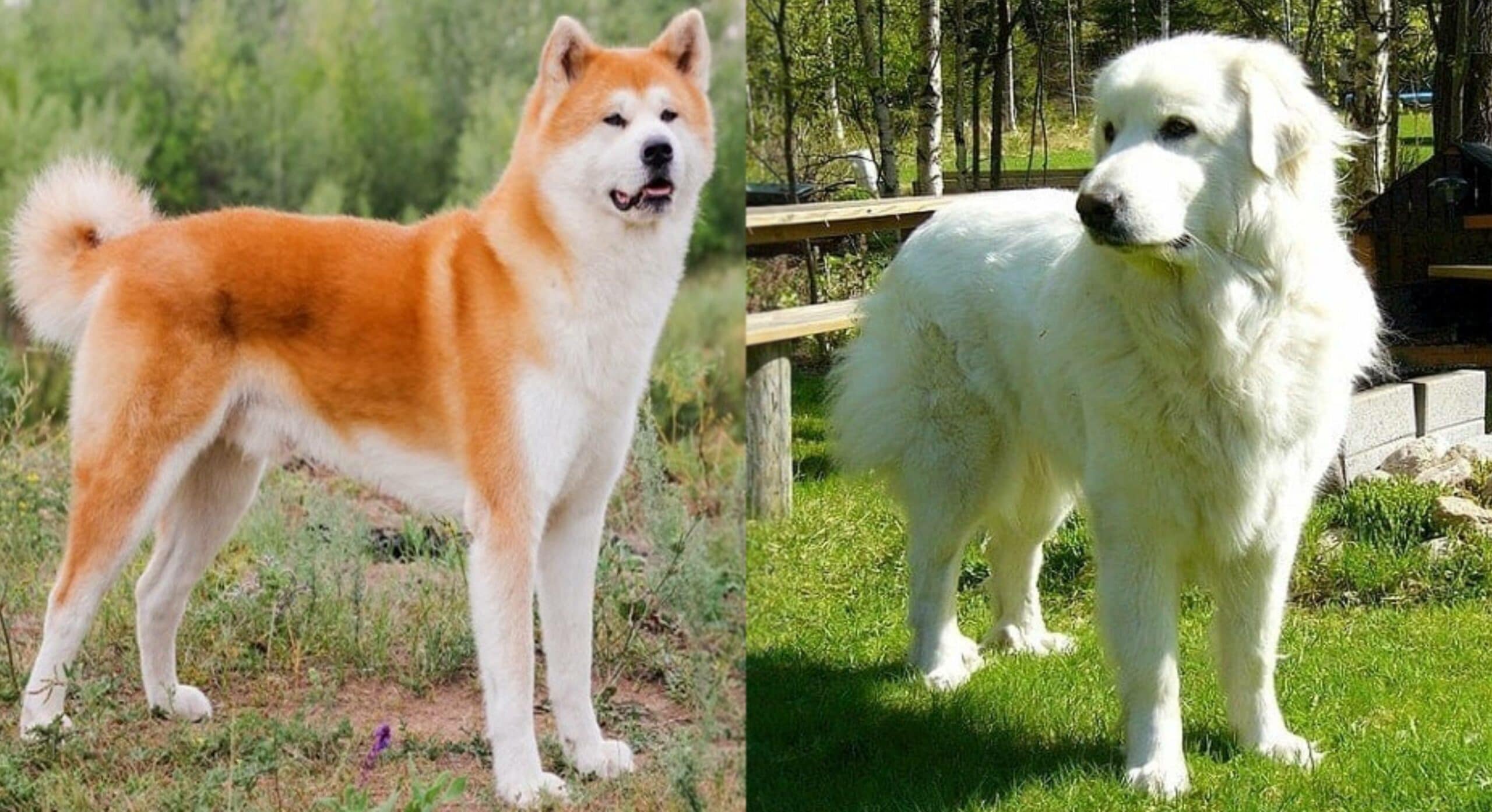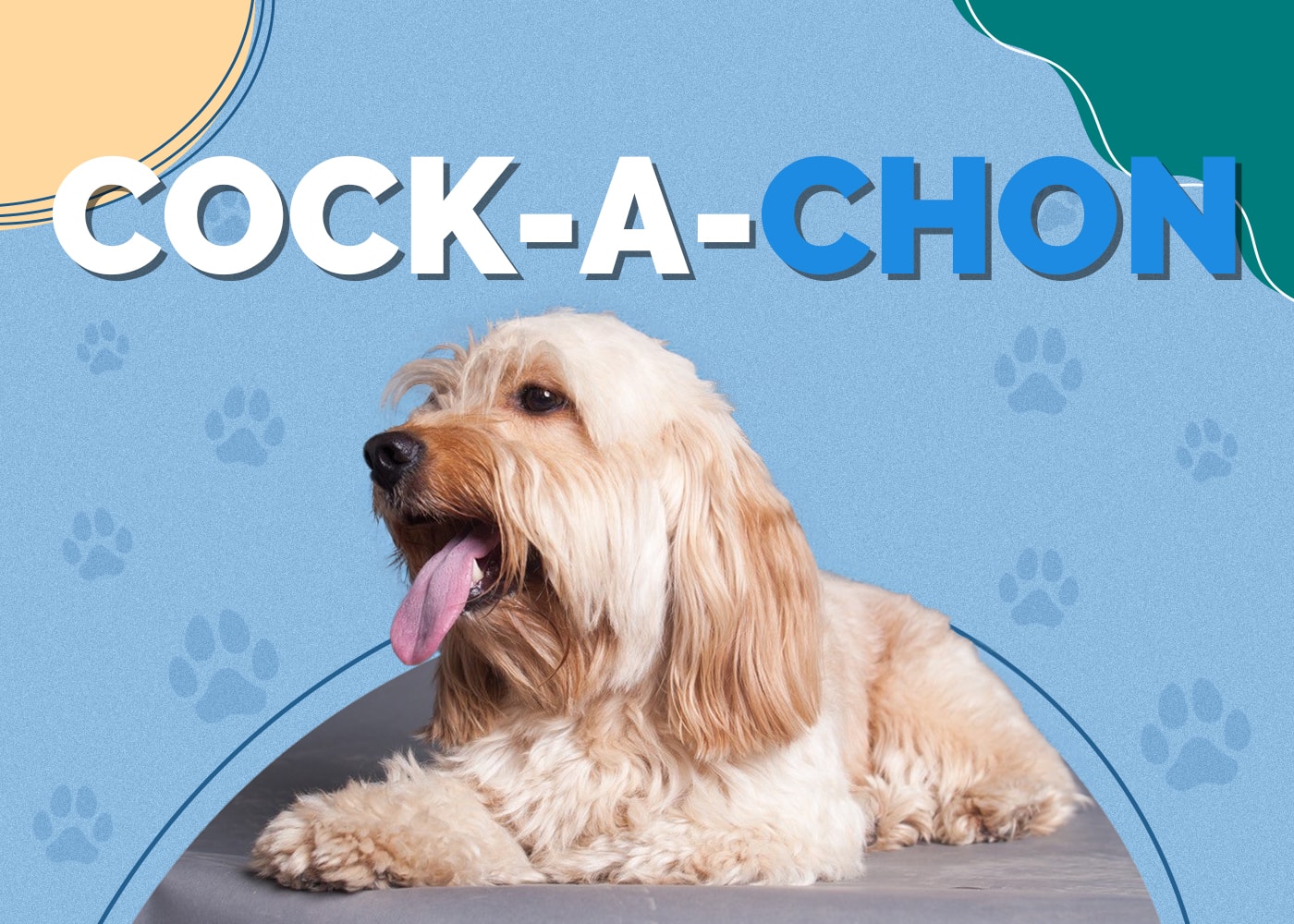Pugshire (Pug & Yorkshire Terrier Mix): Info, Pictures, Characteristics & Facts
Updated on
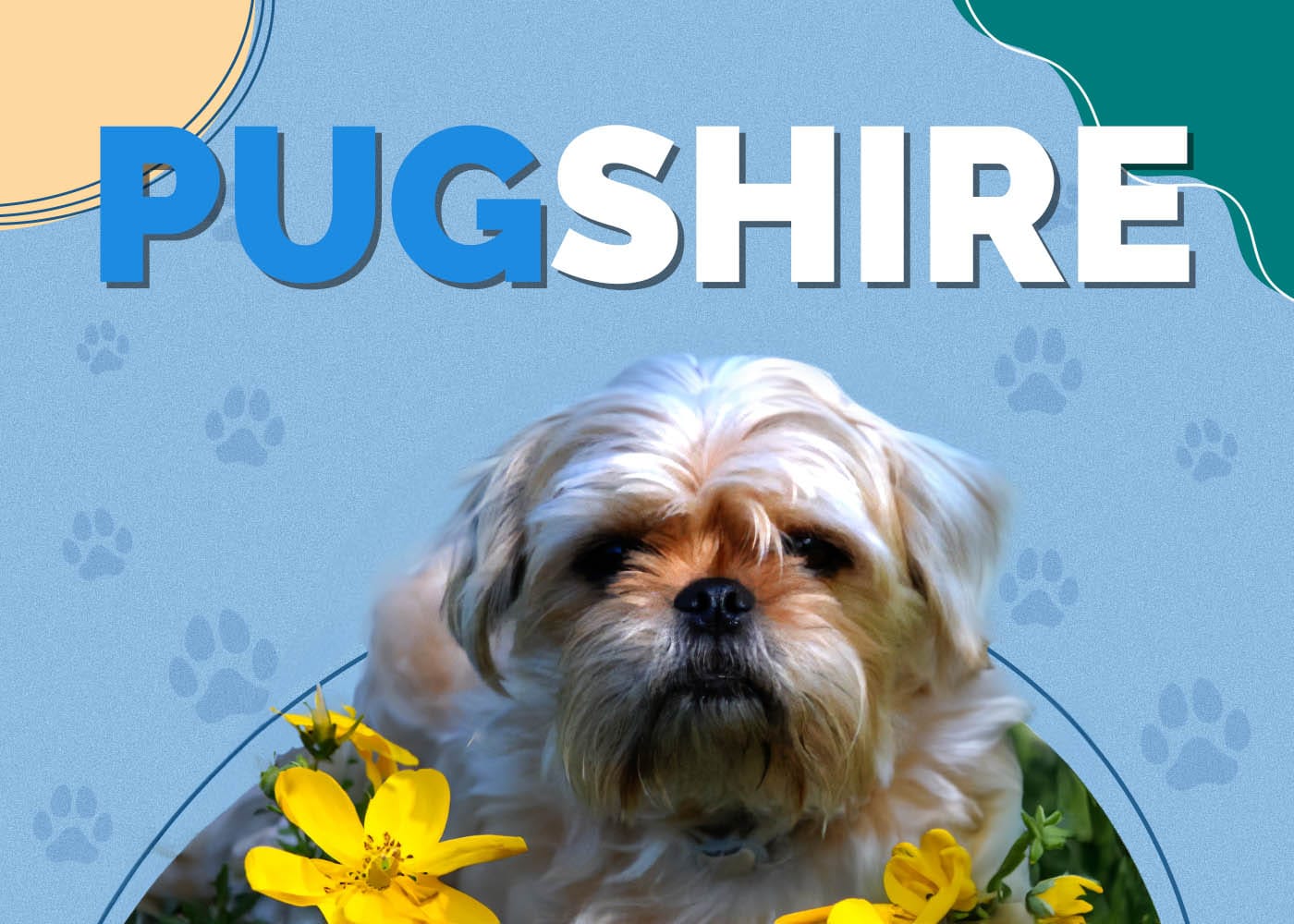
| Height: | 12-15 inches |
| Weight: | 7-12 pounds |
| Lifespan: | 12-15 years |
| Colors: | Silver, brown, brindle, pied, fawn, black, red, blue |
| Suitable for: | Active families, those able to spend plenty of time with their dog |
| Temperament: | Easygoing, stubborn, skittish, active, needy |
You’d be hard-pressed to name two more recognizable breeds than the Pug and Yorkshire Terrier, but what happens when you mix them? Is the resulting breed just as recognizable?
Given that the resulting breed is the Pugshire Terrier, we can safely say that the answer is yes. These little pups look like an equal mix of both their parent breeds, so even if you’ve never seen one before, you could recognize them from a mile away.
Given that this is a newer designer breed, many people have never heard of Pugshire Terriers, let alone seen one. In this guide, we’ll fill you in on everything you need to know about these feisty little pooches.
Pugshire Terrier Puppies
As is the case with any designer breed (but especially one as new as the Pugshire Terrier), it can be difficult to predict what you’ll ultimately end up with if you bring one home. Some of them are carbon copies of one parent or the other, while others represent an equal mix of their parent breeds. So, virtually any blanket statements about these dogs should be taken with a grain of salt. The breed is simply too young for anyone to know for sure what they’re getting when they adopt a Pugshire puppy.
That’s not to discourage you from getting one of these dogs, of course. They’re still wonderful animals, regardless of which parent they end up taking after.
However, if you have your heart set on something particular, like a certain personality quirk or physical characteristic, there’s a good chance that you’ll wind up disappointed. You may get a dog that’s predominantly Pug when you wanted more of a Yorkie, or your pup may not have the cute, bulging eyes you hoped that they’d inherit.
At the end of the day, all you can count on when you bring home a Pugshire Terrier is that the dog will be small.
3 Little-Known Facts About the Pugshire Terrier
1. Their exact origins are unknown.
If you’re curious when and where the Pugshire Terrier was first created, unfortunately, no one knows for sure, and no breeders have stepped forward and claimed to be the first to combine the two breeds.
However, it’s likely that this combination has happened by accident on numerous occasions over the years. Accidental Pugshire Terriers might have even been what inspired a breeder to start crossing the two breeds on purpose. We’ll never know for sure, but it doesn’t seem too far out of the realm of possibility.
One thing we can say for sure is that the purposeful breeding of Yorkies and Pugs has only really caught steam in the last 30 years or so, predominantly in the United States.
2. Most Pugshire Terriers suffer from Little Dog Syndrome.
It’s one of nature’s strangest tricks: Many small breeds act like they’re the most ferocious animal on the planet, while larger breeds like Great Danes often cower at the first sign of trouble, even if that trouble is little more than a shaking leaf.
This, in a nutshell, is called Little Dog Syndrome — and most Pugshire Terriers have it.
These pups think that they’re the toughest dogs on the block, and if you don’t want them to learn the truth the hard way, you’ll need to socialize and train them from an early age. If not taught proper manners, they may act aggressively toward people and dogs alike. And contrary to popular belief, it’s not cute when a little dog is aggressive. It’s dangerous, and it could get them killed and you sued.
3. They’re natural clowns.
Little dog issues notwithstanding, Pugshire Terriers are great at eliciting laughter. Whether it’s their cartoonish appearance or the fact that they’re not the most coordinated animals on the planet, it’s hard not to smile when one of these pups is around.
These dogs need plenty of activity, but they can get that by simply goofing off for your benefit. It makes for a wonderful friendship, but never let them know that you’re laughing at them, not with them. It would crush their fragile little egos.
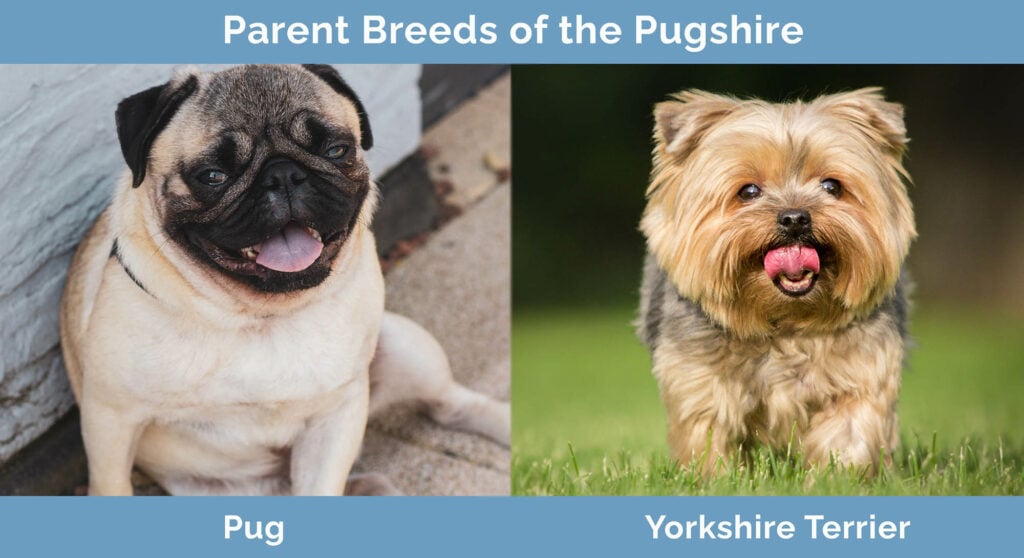
Temperament & Intelligence of the Pugshire Terrier 🧠
Yorkshire Terriers are known for being highly intelligent dogs. Pugs, on the other hand, are less so. However, this reputation may not be earned, and there’s plenty of evidence that Pugs might be smarter than we give them credit for.
Regardless, Pugshires tend to be highly intelligent dogs. However, this often works against their owners as much as for them.
Pugshires have a strong stubborn streak, and while they can quickly pick up on what you’re trying to teach them during training, they may refuse to do it all the same. They’ll also try to outwit you at every turn, so you’ll have to stay vigilant at all times to ensure that they never get away with something they shouldn’t.
As far as temperament is concerned, these are playful and energetic dogs. However, you have to socialize and train them well, as they can be full of nervous energy, especially around children and strangers.
They’re also more prone to separation anxiety than many other breeds, so you’ll need to spend as much time with them as possible. They can easily go with you when you run errands, but if you can’t arrange for someone to be home with them when you’re away, you might be better off getting a less clingy pooch.
Are These Dogs Good for Families? 🏡
Pugshire Terriers can make excellent family pets, provided that they’re taught how to behave from a young age. In fact, you may need as many family members around as possible to help you burn through all their energy.
That said, families with small children should be careful, as these dogs can have hair-trigger tempers. The animal needs to be socialized to be around kids, and the kids need to be taught the healthy ways of dealing with dogs. While there’s little risk of them killing a child, these dogs can still do damage with their teeth, so never leave them unattended with a little one.
You don’t need a family to own a Pugshire, though. They make great pets for single people and seniors, although you’ll need to spend a great deal of time with them to stave off their separation anxiety.
They’re also great for apartment dwellers. While the breed is energetic, their small stature makes it easy to tucker them out, so there’s no need for a huge yard. All you need is a little open space, a bit of free time, and a playful spirit.
Their Little Dog Syndrome can work for you in certain respects. They make surprisingly good guard dogs, and they’ll let the whole neighborhood know if an intruder breaks in. They may even try to chase them off!
Does This Breed Get Along With Other Pets? 🐶 😽
Pugshire Terriers are playful animals, and they’ll take any opportunity to find a new playmate. As a result, they’re generally welcoming of new dogs.
However, that pesky Little Dog Syndrome can rear its ugly head at inopportune moments, so you should watch them carefully. Your Pugshire may try to assert their dominance at some point, and if they do it to the wrong dog, it likely won’t end well for them.
As far as cats and other small pets are concerned, be careful. Pugshires can get along splendidly with them if properly socialized, but they also have rat-hunting DNA lurking inside them, and you don’t want that manifesting itself at the wrong time.
Pugshires also have a strong jealous streak, so they may not appreciate seeing you lavish attention on another animal. You’ll need to deal with that possessiveness before it becomes problematic.
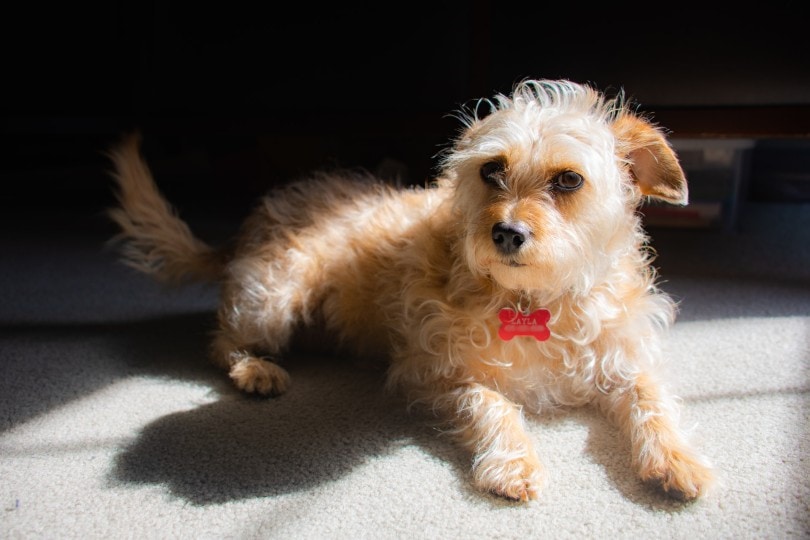
Things to Know When Owning a Pugshire Terrier
It’s difficult to know exactly what to expect from a Pugshire Terrier. Owning one might be like having a Pug, it may be like having a Yorkie, or it could be a mix of the two.
That said, there are a few things that are consistent regardless of how the dog turns out.
Food & Diet Requirements 🦴
Pugshire Terriers don’t eat much, and that’s as it should be. Obesity is terrible for these dogs, so don’t overfeed them. However, feeding them the right food is just as important as feeding them the right amount. They need a kibble that’s high in protein, fiber, and fat, with few carbohydrates. This will help them feel full without packing on excess pounds, and it will also help keep them regular.
Just as important as what’s in their food is what isn’t. You don’t want to see fillers like corn, wheat, or soy, as these are hard for dogs to digest and tend to serve as empty calories. You also don’t want to see animal by-products or chemicals like food colorings in the ingredients list.
Given how small these dogs are, you should pay attention to the size of the kibble that they eat as well. You don’t want to give them giant chunks of food, as they’ll have trouble chewing them. Fortunately, most kibbles designed for smaller dogs use small pieces of kibble.
Unfortunately, you’ll likely have to spend more money to get a food that’s worth your Pugshire’s time. However, that investment can pay off tremendously down the line, as a healthy diet will likely keep your dog from needing multiple expensive trips to the vet’s office.
Exercise 🐕
These pups are little bundles of energy, and that energy can quickly turn destructive if they don’t get plenty of exercise. As a general rule, they need at least an hour of physical stimulation every day to stay happy and healthy. Fortunately, it doesn’t take much effort to tucker them out. A long walk will generally do the trick, or you can just have them race around your apartment. This breed doesn’t need hours of extreme exercise every day like some other dogs.
You need to be careful about not pushing them too hard, in fact. They can easily overheat, and their fragile little bodies don’t do well with high-impact exercise. You don’t want them doing a ton of running, jumping, or climbing stairs.
Just as important as physical exercise is mental stimulation. You want to tax their sharp little minds, so games like hide and seek, obedience training, or puzzle toys are all excellent ways to burn off that mental energy. Don’t neglect any of this either. Any behavioral issues that you have with your dog will only get worse if they don’t get the stimulation they need, and training a Pugshire is difficult enough without them being packed with excess energy.
Training 🦮
Training a Pugshire Terrier is an essential part of owning one, as they can be prone to all sorts of bad behavior (like aggressiveness and possessiveness) if left to their own devices. Unfortunately, it’s also one of the most challenging parts of owning one of these dogs.
These pups are stubborn. There are no two ways about it, so expect to find yourself locked in a battle of wills during most training sessions. It’s important that you win, though, because the negative behaviors that these pups engage in can be bad news for everyone involved. That doesn’t mean you can train them any way that you want, though. They respond best to positive reinforcement, and punishment will likely just cause them to dig in their heels and behave even worse.
Be careful if you use food as a reward, though. Obesity is terrible for these pups, and they can easily get fat if you give them too many treats. Use them sparingly, and substitute praise and affection as much as possible.
The fact that Pugshires are notoriously difficult to train makes them a poor choice for first-time dog owners. However, if you have your heart set on one and don’t feel confident in your training abilities, don’t hesitate to call in a professional for assistance (just make sure they use positive reinforcement methods).
Grooming ✂️
Pugshires don’t require a ton of grooming, but it’s important to do what little maintenance they do require. You’ll want to brush them once or twice a week with a stiff-bristle brush. Pay extra attention to the hair around their ears and behind the neck. If you don’t, they could begin to get mats in their fur, especially if they have a curly coat.
Bathing is largely optional unless they get visibly dirty, but if you do want to clean them, limit it to a few times a year. You should use a gentle, dog-friendly shampoo.
Beyond that, you’ll need to clean their ears once a week and trim their nails as needed. Their eyes should be given special attention as well, as Pugs are known for having eye issues. Clean away any discharge, and take them to the vet if you see any sort of problem.
Health and Conditions ❤️
As with most mixed breeds, Pugshires tend to be healthier than either of their purebred parent breeds. That said, they still have their fair share of health issues. Keep in mind that many of these conditions can be exacerbated by your dog’s diet and exercise habits, so don’t neglect either of those. In particular, obesity will cause all sorts of horrible health issues for your pup. Keep their waistline trim and slim. Much of their health also rides on their breeding, so if you get one from a puppy mill or other disreputable breeder, you’re more likely to have a sickly pooch on your hands. Do your due diligence before buying a puppy.
Also, Pugs are vulnerable to different health conditions than Yorkies, although there is a certain amount of overlap. As a result, the issues that your dog will be most likely to develop will depend in part on which parent breed they favor.
Pugs tend to have more health issues than Yorkies, largely due to their brachycephalic snouts and bulging eyes, so it’s in your best interests to have your mixed dog take after their Yorkie parent.
- Corneal dystrophy
- Entropion
- Dermatitis
- Keratopathy syndrome
- Keratoconjunctivitis sicca
- Retinal dysplasia
- Tracheal collapse
- Portosystemic shunt
- Legg-Calve-Perthes disease
- Patellar luxation
- Brachycephalic syndrome
Male vs. Female
Given that this breed is still too young for us to reliably tell whether the dogs will more often take after their Yorkie or Pug forebears, it should come as no surprise that we don’t really have any reliable data on the male vs. female split either.
Both sexes are roughly the same size (males might be a bit bigger, but not noticeably so). They’re also prone to the same behavioral issues.
At the end of the day, male or female is largely just a matter of personal preference.
Final Thoughts
If you want a little dog with a big personality, but you don’t want something that everyone else has, then the Pugshire Terrier is an excellent choice. These dogs aren’t afraid of anything, which makes them endearing but also gets them into trouble.
While these pups are natural clowns, making them fun to be around, they can also be quite challenging to raise. As a result, they’re not a great fit for first-time dog owners. They also need a great deal of attention, so if you’re never home, you might want to find another breed to raise.
If you can keep up with their demands — and match their bullheadedness — you’ll have a wonderful pet to share your life with. If you can’t stand up to them, you’ll have your entire life ruled by a 10-pound tyrant.
See Also:
- 10 Best Dog Foods for Pugs – Reviews & Top Picks
- How to Train a Pug: 7 Expert Breed Related Tips and FAQs
Featured Photo Credit: Eric Fahrner, Shutterstock





